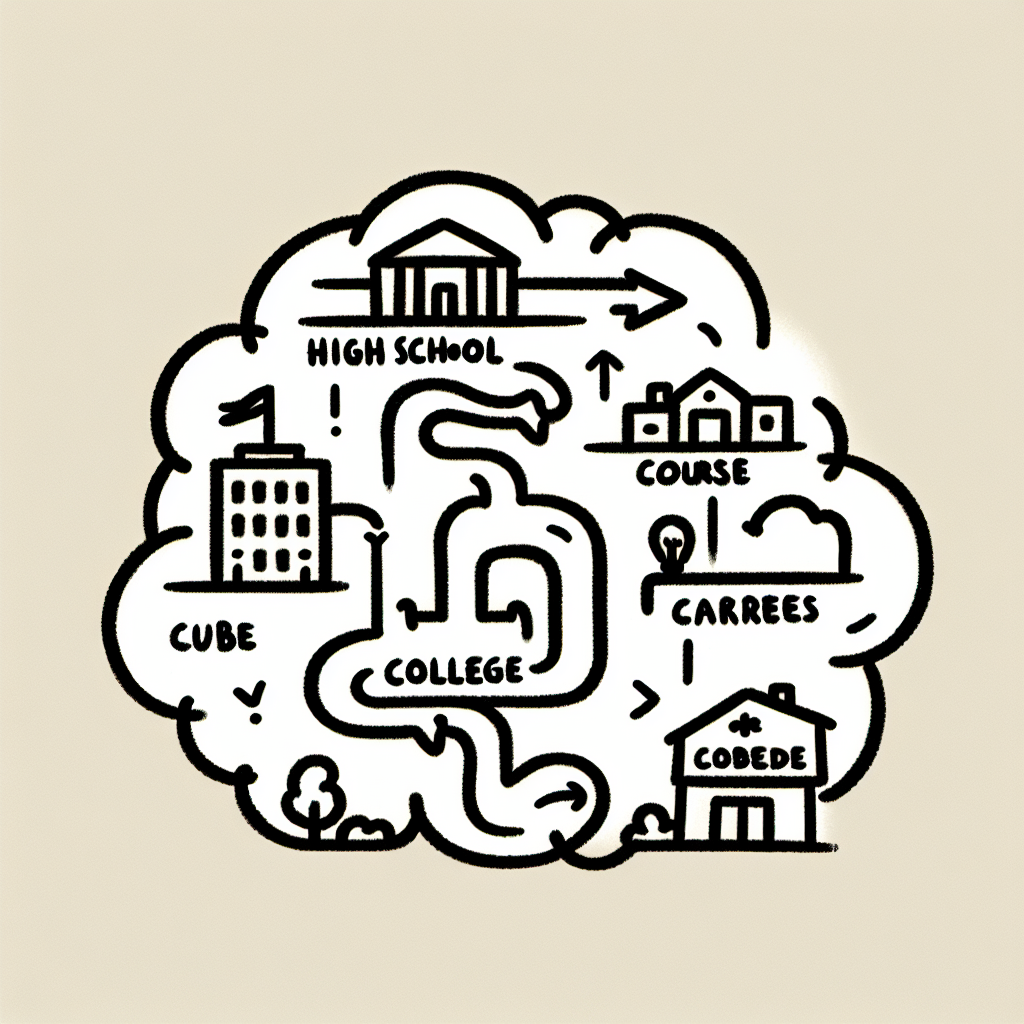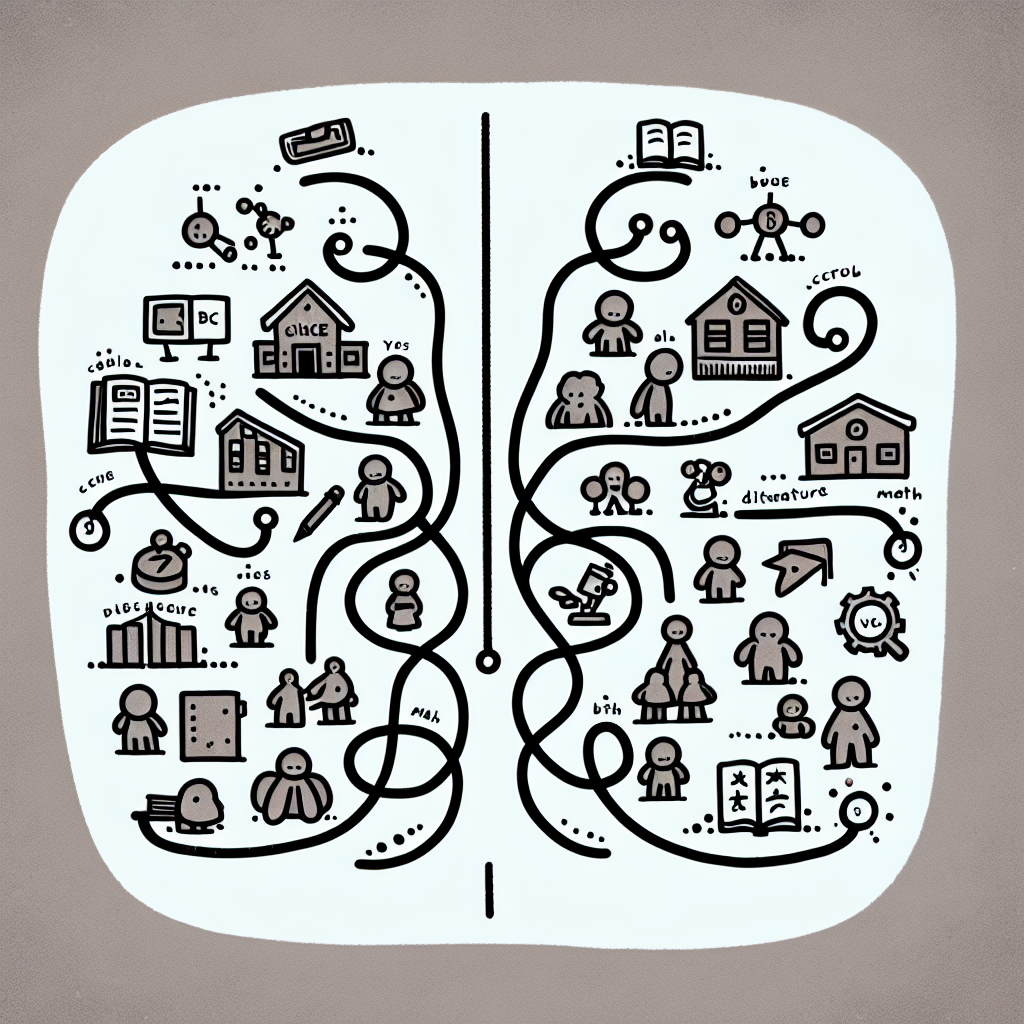Introduction
Course and subject choices play a critical role in shaping students' academic trajectories and future career opportunities. The subjects students select during secondary and post-secondary education can influence university admissions, job prospects, and long-term earning potential. These decisions often set the foundation for professional specialization and life-long learning paths.
However, access to a wide range of course and subject options is not equally distributed. Geographic location, socioeconomic status, and institutional resources can significantly impact the availability and quality of subject offerings. For example, students in rural or underfunded schools may have limited access to advanced science or language courses, which can restrict their higher education and career options. Trends also show disparities in subject uptake across different demographic groups, with systemic factors influencing student preferences and opportunities.
Data plays a vital role in understanding and addressing these disparities. By analyzing enrollment patterns, academic outcomes, and the availability of teaching resources, policymakers and educators can design more equitable education systems. Evidence-based strategies help ensure that all students, regardless of background or location, have the opportunity to make informed and empowering course and subject choices.

Foundations of Course and Subject Choices
What Drives Student Choices?
Students' decisions around course and subject choices are influenced by a combination of personal, institutional, and social factors. Academic interests and long-term career goals often steer students toward specific pathways, such as STEM fields or the humanities. These interests are shaped by a student’s strengths, passions, and exposure to various subjects.
The range of courses offered by a school and how they are scheduled can significantly impact student options. Limited availability of certain classes, scheduling conflicts, or prerequisite requirements may restrict choices. Additionally, the perspectives of peers, parents, and school counselors play a key role. Students often rely on these influences to understand the implications of their choices and to receive guidance on aligning their coursework with future plans.
Institutional policies such as graduation requirements, standardized testing mandates, and credit hour rules also drive course selection. These policies can either support or constrain a student's ability to explore diverse subjects.
Course Choice Categories
Course and subject choices fall into several major categories. Core academic subjects—Math, Science, English, and Social Studies—form the foundation of most educational programs and are usually required for graduation.
Advanced coursework options such as Advanced Placement (AP), International Baccalaureate (IB), Honors, and advanced math courses allow students to engage in more rigorous study and prepare for college-level expectations.
Career and Technical Education (CTE) provides practical, career-oriented training in fields like health sciences, information technology, and skilled trades. These courses support students interested in entering the workforce directly or pursuing specialized postsecondary education.
Elective and enrichment courses offer opportunities for students to explore interests in areas like the arts, foreign languages, and technology. These courses can enhance creativity and support well-rounded development.
Dual enrollment and early college programs enable high school students to take college-level courses and earn credits before graduation. These options can accelerate academic progress and reduce future college costs.
Each of these categories plays a role in shaping a student's academic experience and supports different aspects of their learning and career development within the broader context of course & subject choices.

Geographic Disparities in Course Access and Selection
Rural vs. Urban Participation Trends
Career and Technical Education (CTE)
In 2019, 92% of rural high school graduates completed Career and Technical Education (CTE) courses, compared to 80% of their urban counterparts. ➤ Source This disparity reflects a stronger emphasis on vocational training in rural areas, likely influenced by regional job markets and limited access to advanced academic programs. Rural schools may prioritize practical skills that align with local employment opportunities.
Advanced Mathematics Course Completion
Advanced mathematics course completion also showed a geographic gap in 2019, with 88% of rural graduates completing such courses versus 91% of urban graduates. ➤ Source The slight difference may stem from limited availability of qualified instructors, smaller student populations, or resource constraints in rural schools, affecting their ability to offer higher-level math courses.
Dual Enrollment Opportunities
Participation in dual enrollment programs was notably higher among rural students, with 35% taking part, compared to 26% in urban areas and 23% in suburban schools. ➤ Source This suggests that dual enrollment serves as a critical tool for expanding course and subject choices in rural settings, where traditional academic offerings may be limited.
Structural and Resource-Based Factors
Several structural and resource-related issues contribute to these geographic disparities in course and subject choices. Rural schools often face challenges in recruiting and retaining teachers with specialized subject expertise, limiting the range of advanced courses they can offer. Funding disparities and outdated infrastructure further constrain curriculum options. Additionally, the distance to colleges and universities can pose logistical barriers to dual enrollment, particularly in remote areas. Limited internet connectivity also affects access to digital and online courses, compounding the gap in educational opportunities between rural and urban students.

Long-Term Academic and Career Implications
Postsecondary Transitions
High school course selections play a critical role in shaping postsecondary outcomes. A rigorous course load that includes core academic subjects, honors, Advanced Placement (AP), or International Baccalaureate (IB) classes can significantly improve college readiness. Research shows that students who engage in challenging coursework are more likely to meet college admissions criteria and perform successfully in their first year of college (Adelman, 2006).
Dual enrollment programs, where students take college-level courses while still in high school, also have a measurable impact. Participation in dual enrollment is associated with higher rates of college enrollment, persistence, and degree attainment (An, 2013). These programs expose students to college expectations early, helping them transition more smoothly into postsecondary environments.
Career Pathways and Workforce Alignment
Career and Technical Education (CTE) programs offer a direct link between high school course choices and future employment opportunities. CTE pathways often lead to industry-recognized certifications, apprenticeships, or immediate entry into skilled jobs. These programs are aligned with labor market needs, ensuring that students acquire relevant, job-ready skills.
Choosing courses aligned with specific career goals can also influence future earnings and job satisfaction. Students who follow a coherent sequence of courses related to their intended field are more likely to secure higher-paying jobs and report greater alignment between their education and career (Kemple & Willner, 2008). Strategic course selection helps students build a foundation for long-term professional success.

Innovations in Understanding Student Course Patterns
Course Load Analytics in Higher Education
Recent research suggests that students often register for their heaviest course loads during their first semester at university, counter to traditional assumptions that students gradually build up their workload over time. This finding challenges prevailing advising models, which typically focus on ramping up support later in a student’s academic journey. Instead, there is a growing need to provide robust advising and academic support at the very beginning of students’ university experience to help manage high initial demands and reduce the risk of burnout or academic difficulty Source.
Course Choice Diversity via Community Detection
Another innovation in analyzing student behavior involves applying community detection methods to track course selection patterns. The research indicates that as students progress through their academic programs, their course choices become increasingly diverse Source. This shift suggests that students often explore interdisciplinary interests and do not follow a single, linear academic path. Accordingly, curriculum design should reflect this diversity by offering flexible pathways rather than assuming a standard sequence of courses for all students. This approach supports a broader range of academic exploration and adapts to varied student interests as they evolve.

Equity and Policy Considerations
Addressing Access Gaps
Ensuring equitable access to a broad range of course and subject choices requires targeted policy interventions. Investment in rural education infrastructure remains crucial to address disparities in school resources and technological capacity. Many rural schools lack the facilities or internet connectivity to support diverse academic offerings, which limits student opportunities.
Expanding online and hybrid course offerings can help bridge this gap by providing students in remote or under-resourced areas with access to subjects that may not be available locally. These digital formats can supplement traditional instruction and provide greater flexibility in learning.
Additionally, incentivizing teacher placement in underserved areas is a key strategy. Programs that offer financial benefits, housing assistance, or loan forgiveness can help attract and retain qualified educators in schools that struggle to staff advanced or specialized subjects.
Enhancing Program Flexibility and Customization
To better support diverse student needs and goals, educational systems are increasingly adopting personalized learning pathways. These approaches allow students to choose from a variety of subjects and course sequences that align with their interests and career aspirations.
Modular course design and micro-credentials further enhance flexibility by allowing students to build their learning in smaller, stackable units. This format supports lifelong learning and can be tailored to evolving job market demands.
Strengthening partnerships between high schools, colleges, and industries ensures that course and subject choices are aligned with post-secondary and workforce expectations. Collaborative initiatives can lead to dual enrollment programs, internships, and curriculum development that reflect real-world applications.
Data-Driven Decision Making
Effective policy decisions around course and subject choices depend on robust data. Leveraging analytics to monitor course enrollment trends helps educators and policymakers understand which subjects are in demand and where gaps exist.
Identifying underserved student populations and course deserts—areas where students have limited access to a variety of subjects—can inform targeted interventions. For instance, districts can prioritize resource allocation to schools lacking in advanced coursework or STEM subjects.
Using predictive modeling enables schools to anticipate future enrollment patterns and adjust course offerings accordingly. These insights support more equitable and efficient distribution of educational opportunities across regions and demographics.

Conclusion
Significant disparities in course and subject choices persist across different educational environments. Students in under-resourced schools often have limited access to advanced coursework, while those in more affluent areas benefit from a wider range of subjects and specialized programs. Trends also show that subject offerings do not always align with evolving student interests or the demands of a changing labor market.
Aligning course offerings with both student aspirations and workforce demands is essential. When schools provide relevant and diverse options, students are better prepared for postsecondary education and career pathways. This alignment ensures that education remains a meaningful bridge between individual goals and societal needs.
To address existing gaps and promote equitable access, policy, research, and educational practice must work together. Coordinated efforts are needed to design flexible, inclusive, and future-ready learning pathways that adapt to the dynamic landscape of both education and employment. Through this collaborative approach, course & subject choices can become a lever for opportunity and innovation rather than a reflection of systemic inequality.














